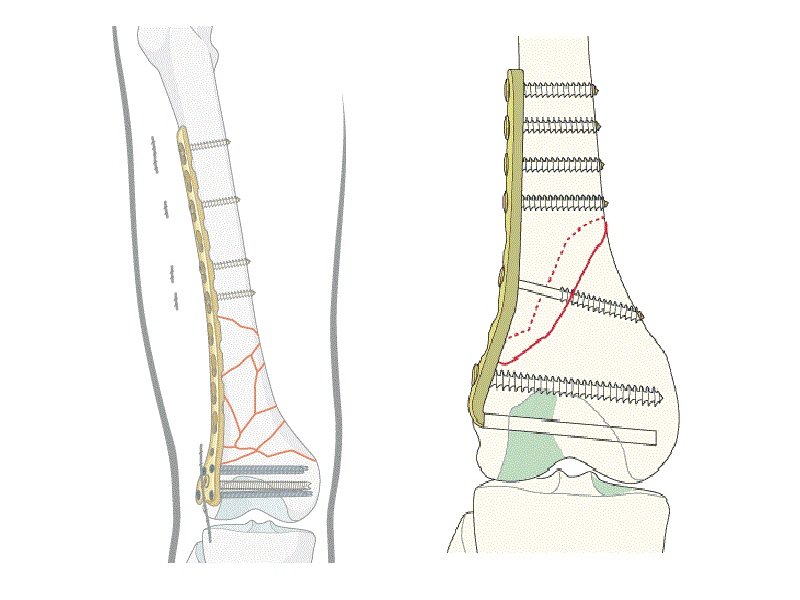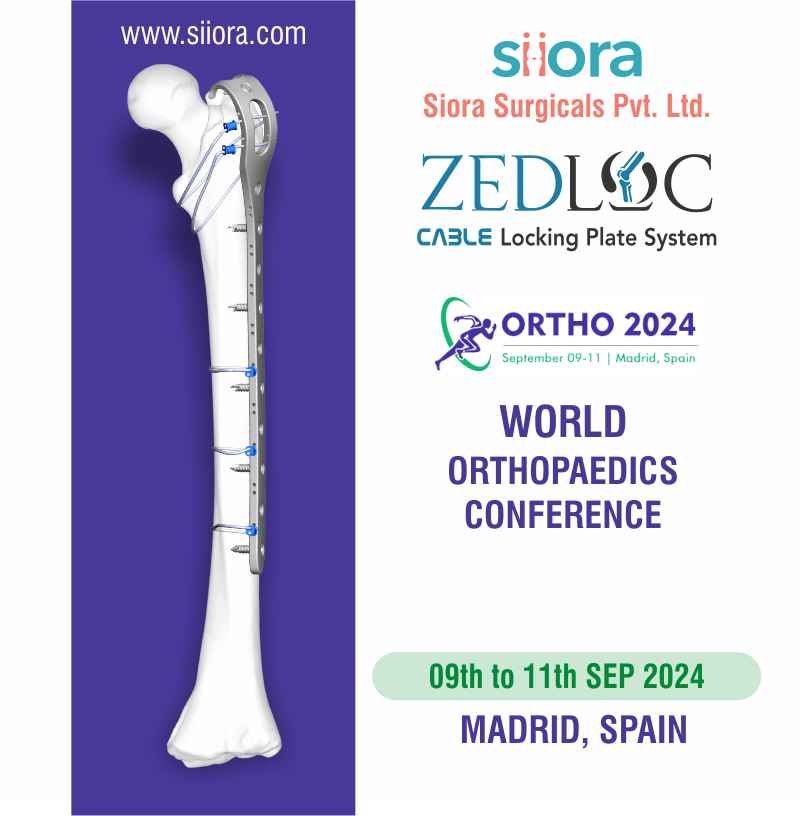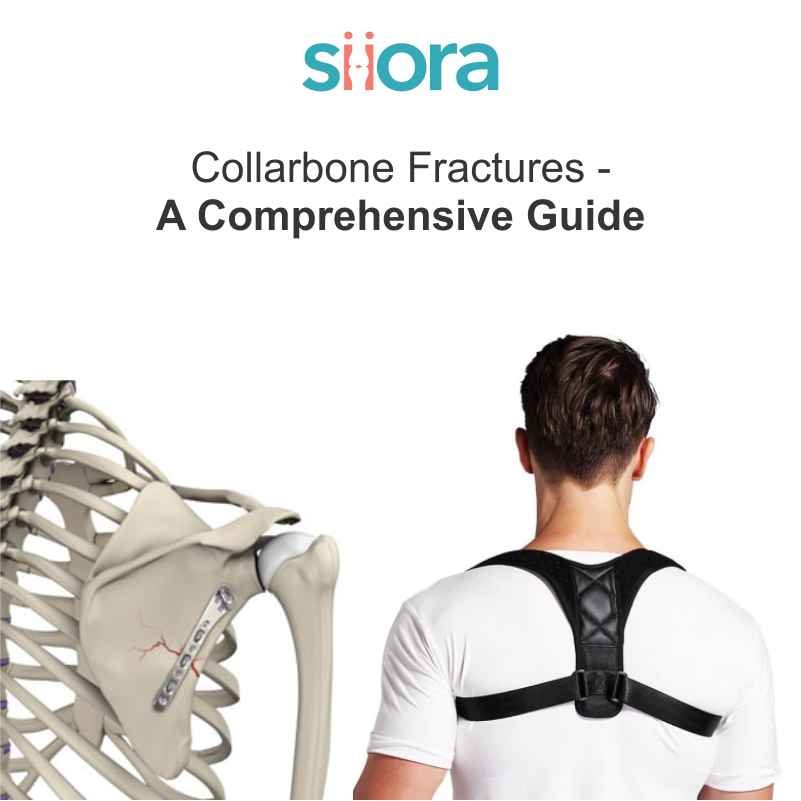Distal Femur is the part of thighbone above Knee joint, which pans out like an inverted funnel. A fracture in this bone is termed a Distal Femur Fracture.
Such fractures commonly occur in people whose bones are weak due to old age, or in younger people who have suffered high energy injuries like a car crash. In both, the elderly and the young, the injury may extend into the knee joint and may shatter the bone into many pieces.
Anatomy
The largest weight-bearing joint in the body is the Knee. While distal femur bone makes up the top part of the knee, the upper part of Tibia bone supports the bottom part of the knee joint.
Articular cartilage, a smooth, slippery substance covers the ends of the femur. When we bend or straighten our knee, this cartilage protects and cushions the bone.
Normal knee anatomy
Knee Joint is supported by strong muscles. Muscle in the front of our thigh is called Quadriceps, while the one at the back of thigh is Hamstrings. Apart from supporting, they also allow us to bend and straighten our knee.
Description
There are different types of Distal Femur Fractures. The bone may break in transverse plane or into many pieces (comminuted fracture). Sometimes the fracture may extend into the knee joint and separate the surface of the bone into a few (or many) parts. Such fractures are called intra-articular. Due to damage to the cartilage surface of the bone, intra-articular fractures can be more difficult to treat.
Various fracture types of distal femur:
(Left) A transverse fracture across the distal femur.
(Center) An intra-articular fracture that extends into the knee joint.
(Right) A comminuted fracture that extends into the knee joint and upwards into the femoral shaft.
Distal femur fractures can be closed — if the skin is intact — or can be open. An open fracture is when a bone breaks in such a way that bone fragments stick out through the skin or a wound penetrates down to the broken bone.
Open fractures often have associated damage to the surrounding muscles, tendons, and ligaments. Thus, they have a higher risk of complications and take a longer time to heal.
The hamstrings and quadriceps muscles, both tend to contract and shorten when the distal femur breaks. In such case, the bone fragments change position and it is difficult to line up with a cast.
Distal femur fracture in which the bones are out of alignment
In this x-ray of the knee taken from the side, the muscles at the front and back of the thigh have shortened and pulled the broken pieces of bone out of alignment.
Cause
As discussed earlier, Fractures of distal femur occur mostly in younger people (under age 50) or the elderly.
Younger patients suffer high energy injuries usually caused by falls from significant heights or motor vehicle collisions. Due to the high energy impact, many patients also often have injuries of the head, chest, abdomen, pelvis, spine, and other limbs.
In Elderly people, with age the bone quality becomes poor. Bone become thinner and become very weak and fragile. A lower-force impact, like a fall from standing, can also cause a distal femur fracture. Although elderly patients do not often have other injuries, they may have concerning medical problems, such as conditions of the heart, lungs, and kidneys, and diabetes.
Symptoms
The most common symptoms of distal femur fracture include:
Pain with weight-bearing
Swelling and bruising
Tenderness to touch
Deformity — the knee may look “out of place” and the leg may appear shorter and crooked
While in majority of cases, these symptoms occur around the knee, but there may also be symptoms in the thigh area.








